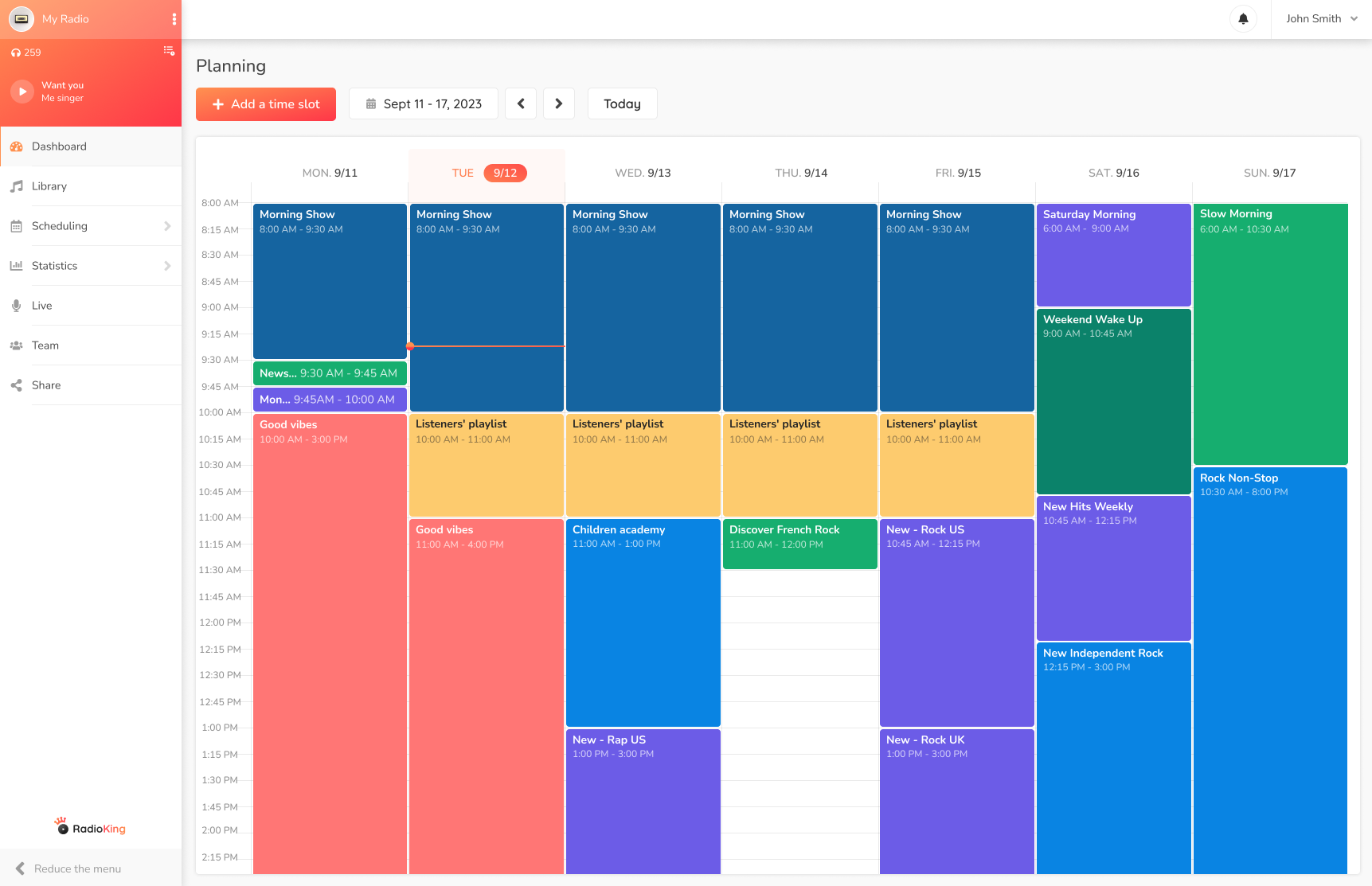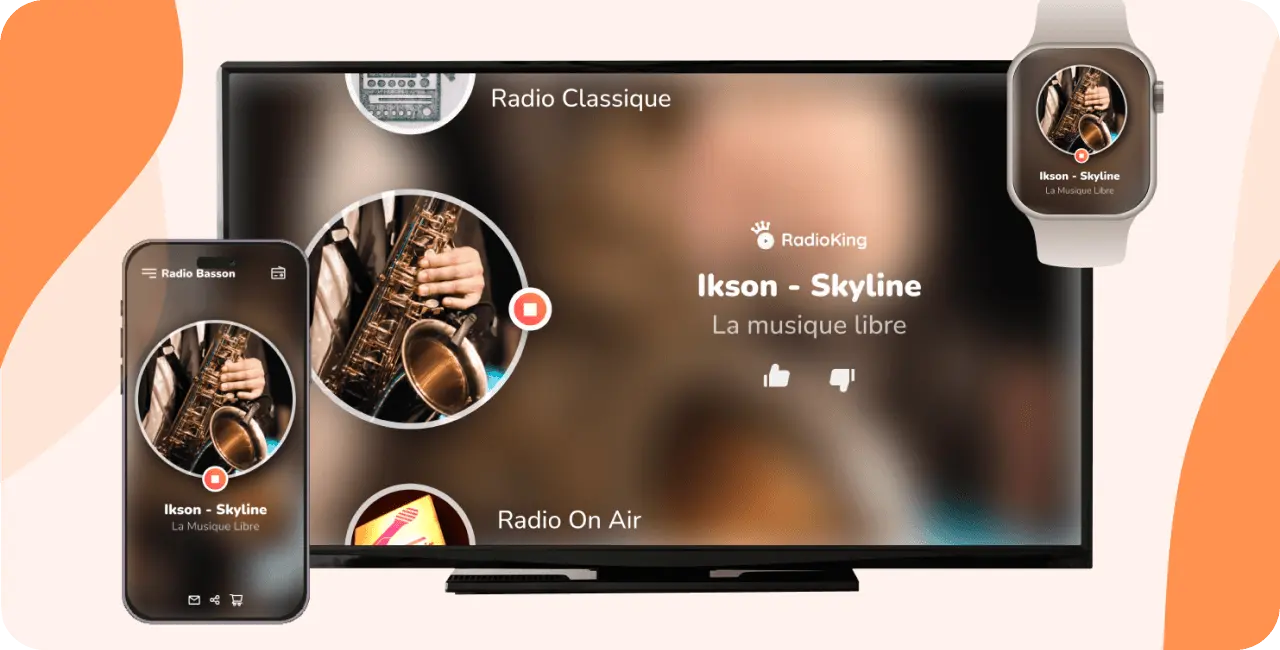Community radio stations have long been powerful tools for connection. They give a voice to local groups, celebrate culture, and foster discussions that matter most to the people they serve. Whether you want to highlight local music, promote social initiatives, or create a space for free expression, starting a community radio station is more accessible today than ever before, especially thanks to online broadcasting.
Let’s take a look at the key steps to launching your own community radio station, from defining your mission to broadcasting your first show.
1/ Define your mission
2/ Set up your programming
3/ Build your team
4/ Get your equipment
5/ Choose your broadcasting solution
6/ Engage your community
7/ Secure funding
8/ Launch and grow
1/ Define your mission and audience
Before you dive into the technical aspect of setting up a community radio station, it’s important to properly define your goals. This will help you create a solid basis for your project, and define a clear direction for your content.
Why your mission matters
Every successful community radio station begins with a clear sense of purpose. There are many different ways to serve your community through your radio station. Try and define the key missions of your station, such as:
- Amplify local voices
- Promote independent artists
- Provide news
- Provide a platform for underrepresented communities
Your mission will guide every decision you make going forward with this project, so make sure that it’s clear!
Identifying your audience
Knowing who you’re talking to will also help you define the right tone and format for your radio station. Think carefully about who you want to reach. Is your target audience primarily young people, local businesses, or a specific cultural group? Understanding your listeners will help you create content that resonates with them.
Setting Core Values
Community radio stations thrive when they embody strong values such as inclusivity, authenticity, and diversity. Defining these principles early will shape your programming and attract like-minded volunteers and listeners. Be sure to highlight these values regularly, whether it’s:
- directly through your content
- your branding (name, logo, etc…)
- on your radio website, or mobile app
- on your social networks
2/ Plan your programming
Now that you have a clear idea of your radio concept, you can start planning the content you want to broadcast.
Choosing show formats
The strength of your station lies in the variety of content you offer, such as: talk shows, interviews, local music sessions, cultural storytelling, live coverage of community events, etc… To help you decide which formats to prioritise, think about your available ressources and the amount of time you can dedicate to creating content for the station.
Building a broadcast schedule
Online radio stations stream continuously, but you obviously don’t need to be on-hand 24/7! With RadioKing, you can schedule your content to broadcast automatically up to 6 months in advance. Decide whether you want to create a weekly or monthly broadcasting schedule, this will help you visualize a balanced mix of music, talk, and special shows.

If you’re planning on broadcasting live, don’t forget to record your radio show so that you can provide it as catch-up content at a later time!
Involving the community
Don’t just broadcast to your community, broadcast with them. Invite local people to host, run polls for topics, offer giveaways, or let listeners submit music and stories. This makes your programming feel authentic and inclusive. Involving your listeners is a great way to boost fidelity and keep them coming back for more.
3/ Build your team
Running a station is easier when responsibilities are shared. Give your community the chance to get involved!
Key roles to fill
- Station manager: oversees general operations
- Technical lead: handles the equipment and software
- Presenters & DJs: host your radio shows
- Community manager: creates and posts content to social networks
When building your team, look into these specific roles:
Recruiting volunteers
Many community radios rely on volunteers to handle their content and broadcasting. If you’re looking for people to help, you can reach out to local schools, cultural centers, and associations. Many members of these groups are regularly looking for ways to participate and create a positive impact on their community. Remember: a motivated team can bring creativity and diversity to your station!
Training and motivation
Some may not volunteer to help because they fear they don’t have the right knowledge or capacities. As part of your radio initiative, you may want to offer basic training workshops and regular feedback sessions. Keeping your team engaged and appreciated ensures they’ll stay committed and excited about contributing.
4/ Get the right equipment
Essential starter kit
The great news is that you don’t need a professional studio to get started! The equipment you’ll need will totally depend on the type of content you want to broadcast. Here’s a list of equipment that you may need:
- A computer/laptop: to set up and manage your online radio station
- An internet connection: to set up and manage your online radio station
- XLR or USB microphone(s): to pre-record content/ broadcast live
- Headphones: to listen to what’s broadcasting
- Mixing desk/audio interface: to connect your XLR microphone(s) to your computer
For a more in-depth explanation of the various equipment you may need, we invite you to take a look at this article
Remember: the quality of your content matters more than fancy gear. Start small and scale gradually, you can always add more equipment as your station develops!
5/ Choose a broadcasting solution
FM and AM stations require expensive licenses and transmission equipment. Online radio, on the other hand, makes broadcasting accessible, affordable, and global!
Why use RadioKing
With RadioKing, you can set up your station in just a few clicks, no technical expertise required. The Radio Manager allows you to handle all aspects of your station, such as:
- Intelligent media library: organise your audio content, and create your playlists/programs
- Planning: schedule your content to broadcast up to 6 months in advance
- Statistics: get detailed information about the listening habits of your audience
- Live broadcasting: configure your radio stream to your preferred broadcasting software
- Team: manage the access rights of your team members
- Share: everything you need to share your radio station with your listeners
Reaching listeners everywhere
Thanks to online radio, your community can listen to your station on their preferred device: computer, mobile app, connected car, smart TV or even smart speaker! Broadcasting online allows you to expand your reach far beyond geographical limitations while keeping costs low.

6/ Engage your community
Radio isn’t just a one-way street (especially when it comes to running a community radio station!) There are many different ways that you can engage your audience and create a real connection.
Encouraging interaction
Community radio works best when listeners are actively involved. Open your lines to call-ins, invite voice messages via the audio shout-out widget, or run live polls to make programming more interactive.
Organizing events and giveaways
Strengthen your presence by hosting concerts, open-mic nights, or community debates. Events help you build stronger relationships with listeners and attract new audiences. Not able to host physical events? Run contests and giveaways on your station instead!
Using social media
A consistent social media presence keeps your community connected even when you’re off-air. Share program highlights, behind-the-scenes moments, and exclusive interviews. Don’t forget to respond to comments too!
7/ Secure funding and sustainability
Donations and crowdfunding
Your listeners are often your biggest supporters. Don’t hesitate to set up donation systems or crowdfunding campaigns where people can directly contribute to keeping the station alive.
Grants and public funding
Many cultural organizations, NGOs, or local governments provide funding for community-based initiatives. Research opportunities in your region and apply for support.
Sponsorships and partnerships
Local businesses may be willing to sponsor shows in exchange for on-air mentions or community collaborations. This not only supports your station financially but also strengthens local ties!
8/ Launch and grow your community radio station
Launching your station is the first step, but after that you need to keep the momentum going!
Preparing your community radio station for launch
Tease your first broadcasts on social media, reach out to local press, and partner with community groups to spread the word. You want to try and build excitement so people are eager to tune in. On launch day, plan something memorable such as a live event, a special guest appearance, or a listening party. This creates buzz and gets people talking about your station.
Continuous growth
Your station’s journey doesn’t end at launch. Collect listener feedback, experiment with new formats, and adapt your programming as your audience evolves. Growth is about listening, learning, and improving over time.
Starting a community radio station is a rewarding journey. It empowers people, strengthens community bonds, and creates a platform for voices that often go unheard. Thanks to online broadcasting tools like RadioKing, you don’t need a big budget or technical background to make it happen, you just need passion and a desire to connect.
